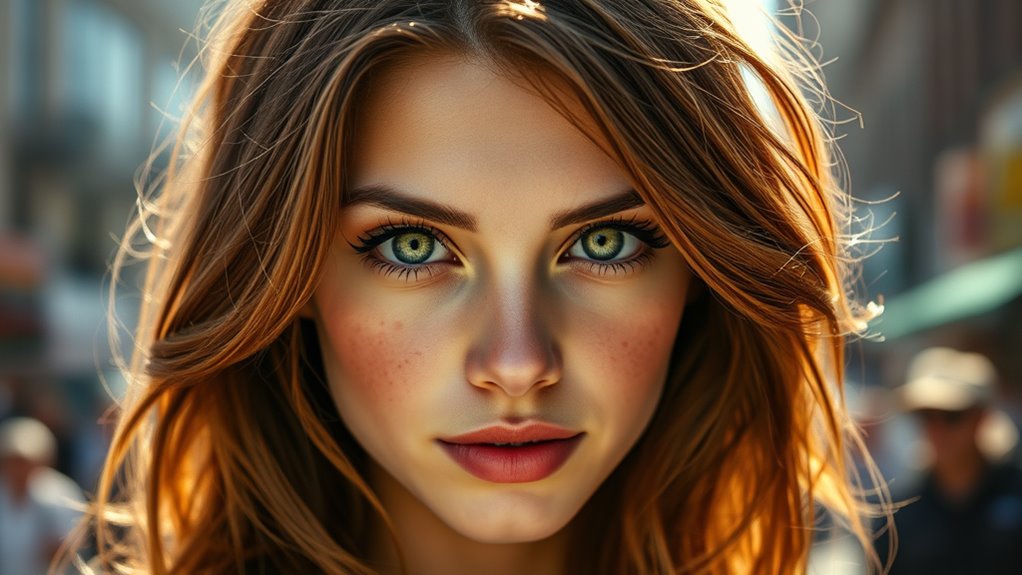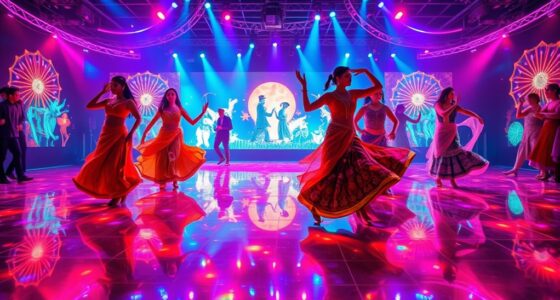Algorithms analyze extensive datasets to identify the perfect heroine for hit films. They assess audience preferences, successful casting patterns, and on-screen chemistry, ensuring the chosen actress resonates with viewers. AI tools predict audience responses by factoring in elements like performance and character backgrounds. This data-driven approach enhances creative decisions and improves box office predictions. You’ll discover more about how these advancements shape casting choices and the film industry.
Key Takeaways
- Algorithms analyze vast databases to match actresses with specific character traits and audience preferences for optimal casting decisions.
- Predictive analytics assess successful patterns from past performances to identify the most suitable heroine for the film’s theme.
- Data-driven insights evaluate on-screen chemistry between potential heroines and other cast members, ensuring dynamic interactions.
- Natural language processing gauges public sentiment around female characters, influencing the choice of the ideal heroine.
- AI tools streamline the audition process, allowing for efficient evaluation of candidates based on real-time data and feedback.
The Role of AI in Modern Casting Decisions

As the entertainment industry evolves, AI plays an essential role in modern casting decisions, transforming how talent is selected for various roles. You’ll find that AI quickly analyzes vast actor databases, matching performers with specific criteria like acting style and performance reviews. This technology helps mitigate unconscious biases by anonymizing aspects of an actor’s profile, ensuring talent takes center stage. Plus, it uses predictive analytics to spot successful casting patterns, guiding future choices. AI-driven platforms streamline the audition process, enhance efficiency, and engage audiences by predicting their responses to casting decisions. Additionally, AI leverages data analytics to assess on-screen chemistry between actors, ensuring the right dynamic is achieved for each role.
Analyzing Female Representation in Film
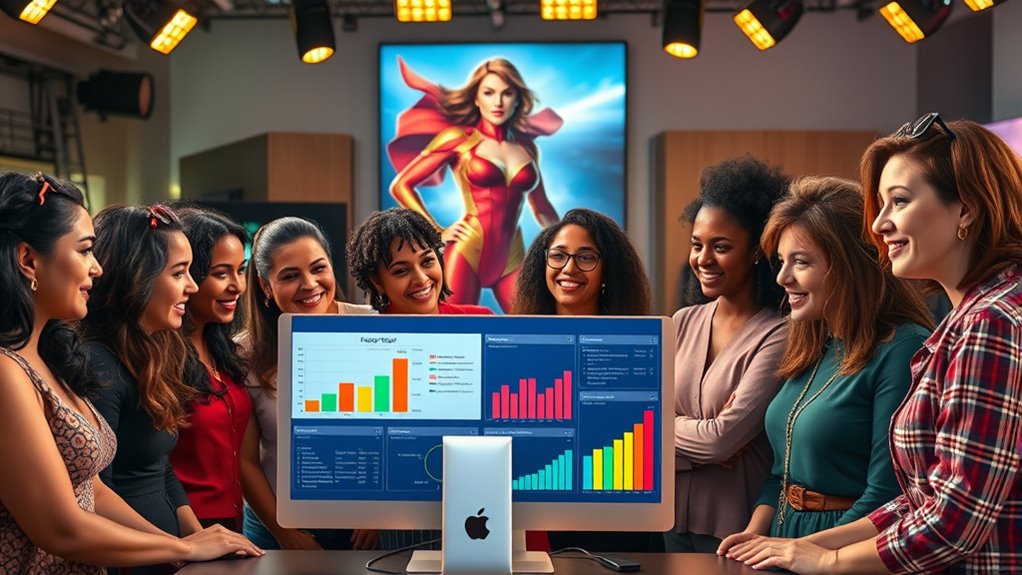
While the push for greater female representation in film continues, recent statistics reveal a troubling decline in speaking roles for women. In 2023, female speaking roles dropped to 35%, with 77% of top-grossing films featuring more male characters.
Significantly, only 18% of films showcased more female characters. You might notice that female protagonists also decreased from 33% to 28%. Moreover, the percentage of females in speaking roles declined from 37% in 2022 to 35% in 2023.
Racial diversity among female characters remains a challenge, with Black and Latina representation declining.
Behind the camera, women held only 16% of directing roles, emphasizing the need for more female filmmakers.
As you can see, addressing these disparities is essential for fostering a richer and more inclusive narrative landscape in the film industry.
Predictive Modeling for Box Office Success

The film industry’s challenge of female representation extends to how films are evaluated for success. Predictive modeling uses machine learning algorithms to analyze historical box office data, social media activity, and audience demographics. By employing regression and classification models, these algorithms predict box office outcomes, helping studios make informed decisions. Key features like film genre, marketing intensity, and actor performance greatly influence predictions. Techniques such as natural language processing gauge public sentiment, while computer vision assesses trailer appeal. Despite its promise, accuracy remains a challenge, with some models showing error rates as high as 57.1%. As data quality and feature selection improve, predictive models will become even more reliable, shaping future film strategies and enhancing female representation in lead roles. The integration of AI technologies is crucial for refining these predictive models and improving their effectiveness over time.
Deep Learning Techniques in Character Selection
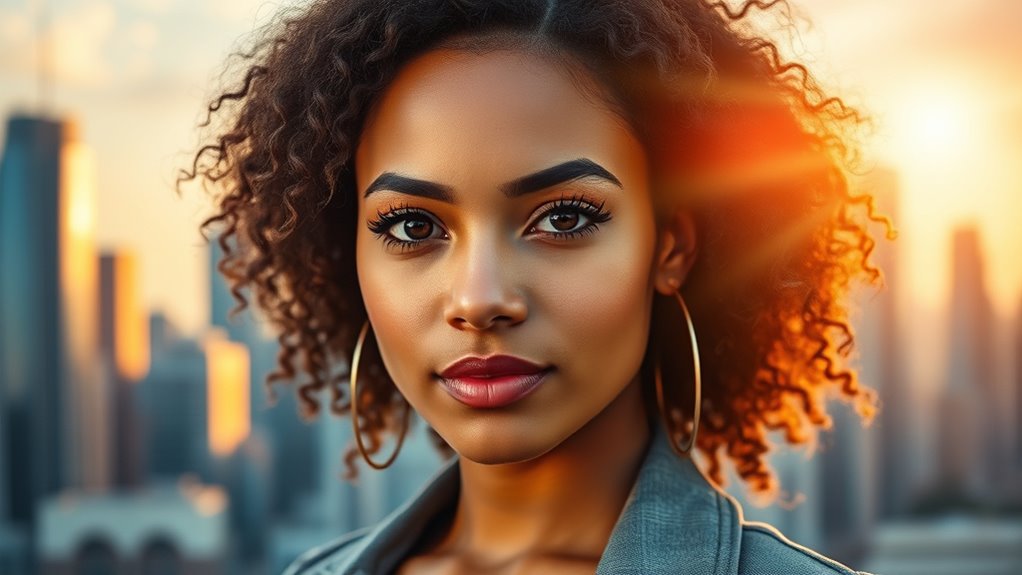
Deep learning techniques have revolutionized character selection in filmmaking by providing advanced methods for detecting and identifying faces within movie scenes. Using models like VGG Face, you can extract deep features that improve the accuracy of face clustering. Dynamic clustering, particularly through deep adaptive clustering (DAC), allows you to cluster faces without needing prior knowledge of character numbers. This flexibility is especially useful in movies with varying character appearances. Additionally, the integration of AI Blog Writing techniques can enhance the storytelling aspect by ensuring that character backgrounds align seamlessly with the narrative. Moreover, embracing failure in the creative process enables filmmakers to refine their character selections through iterative experimentation and feedback.
Script Analysis and Gender Parity
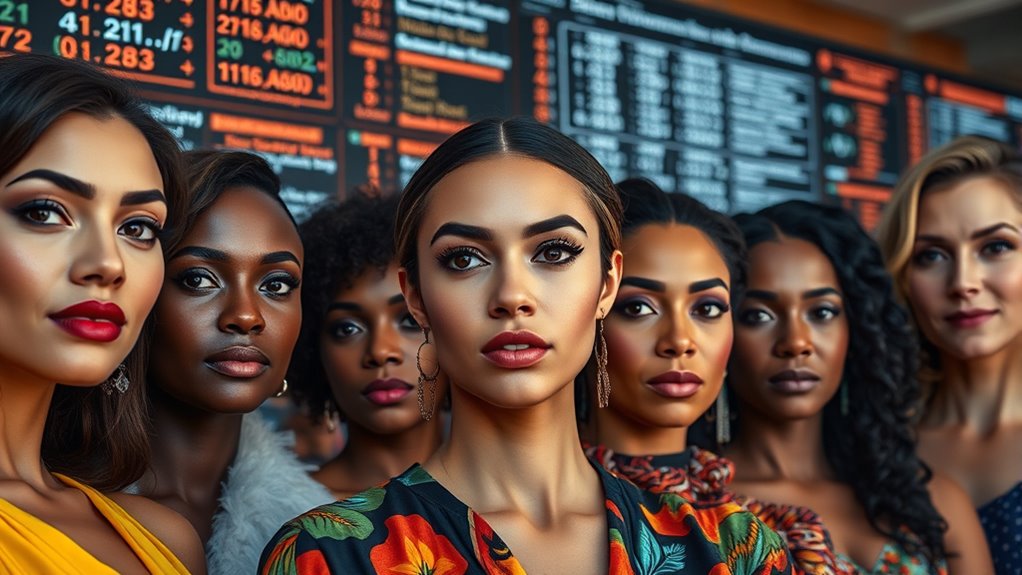
Character selection isn’t just about identifying faces; it also involves understanding the narratives that shape them.
In film, gender representation is alarmingly skewed, with only 17% of Oscar nominees being women and less than 2% women of color. This underrepresentation extends to lead roles, which plummeted in 2023. Only 30 films featured women and girls in lead/co-lead roles among the 100 highest-grossing films in 2023.
Scripts often perpetuate gender stereotypes, influencing societal perceptions and limiting storytelling potential. When female characters are stereotyped, it restricts their depth and relatability. Additionally, the lack of diverse female characters hampers creative possibilities.
Initiatives like ReFrame aim for gender parity, but only 29% of films currently meet their criteria. To foster real change, we must address biases in scripting and advocate for equal opportunities in the industry.
The Impact of Casting Choices on Audience Engagement
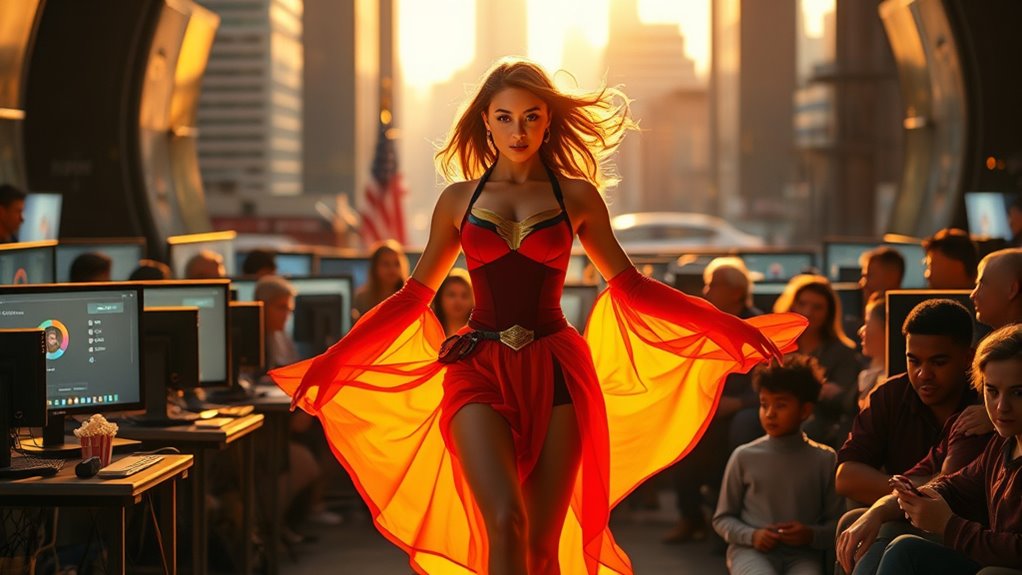
While casting choices may seem like just one aspect of filmmaking, they greatly shape audience engagement and emotional investment. When actors embody their roles with realism, you’re more likely to form a deeper emotional connection. For instance, method acting allows you to immerse yourself in the character’s journey, enhancing your overall experience. Strong physicality and vocal delivery also play an essential role in gripping your attention. Well-developed characters with meaningful arcs resonate with you, making you care about their transformations. Furthermore, the actor-audience relationship thrives on dynamic communication, where tone and body language create intimacy. Ultimately, aligning casting choices with genre expectations helps guarantee that you remain engaged throughout the film, making every moment impactful. This is particularly important as the rise of AI-generated content has increased the demand for authentic performances that resonate with audiences. In this context, high-quality equipment is crucial for capturing the nuances of an actor’s performance, ensuring that their emotional depth translates effectively to the audience.
Ethical Considerations in AI-Driven Casting

As the film industry increasingly turns to AI for casting decisions, it’s essential to contemplate the ethical implications that come with this technology. AI can perpetuate existing biases if it’s trained on skewed data, leading to unfair casting outcomes. You should also consider privacy concerns, as these systems gather extensive personal information from job applicants. The lack of transparency in AI decision-making can erode trust and accountability. Additionally, relying on AI might displace human casting directors, impacting employment. Most importantly, it risks dehumanizing the casting process, overlooking significant human qualities. Balancing AI efficiency with human judgment is crucial to guarantee ethical standards in casting, promoting fairness and diversity while respecting individuals’ rights and experiences.
Future Trends in AI and Film Production
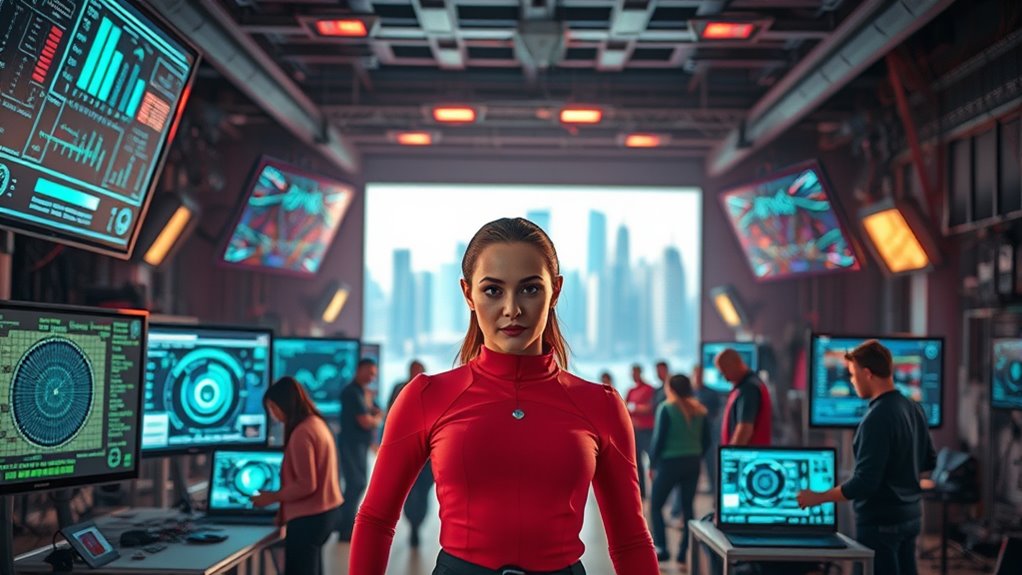
With AI increasingly integrated into film production, you’re witnessing a transformative shift in how movies are made and experienced.
AI tools are enhancing scriptwriting by predicting audience preferences, making sure your film resonates before filming even starts. Predictive analytics help studios forecast box office success, while AI-driven editing streamlines post-production tasks, saving time and resources. This integration of AI tools ensures that filmmakers can make informed creative decisions from the outset. Additionally, the rise of quantum computing advancements is expected to further enhance data processing capabilities in film production.
Virtual production techniques allow directors to visualize scenes in real-time, cutting costs considerably. Additionally, independent filmmakers benefit from affordable AI tools, enabling them to create high-quality content on tight budgets.
As sustainability becomes essential, filmmakers are adopting renewable energy and eco-friendly materials, ensuring a greener industry. These trends promise an exciting future where creativity and technology intersect seamlessly.
Frequently Asked Questions
How Do Algorithms Account for Audience Preferences in Casting Decisions?
Algorithms account for audience preferences in casting decisions by analyzing extensive data on viewer trends and engagement metrics.
They track what types of performances resonate with audiences, allowing you to see patterns in successful castings. By examining past roles and audience reactions, algorithms predict how well an actor will be received.
This data-driven approach helps you make informed choices, ultimately increasing the likelihood of a film’s success in the market.
What Challenges Arise When Implementing AI in Casting Processes?
Did you know that around 80% of AI projects fail due to data management issues?
When implementing AI in casting, you’ll face challenges like poor data quality, which can lead to biased decisions.
Integrating diverse data sources complicates the process, while data silos hinder thorough insights.
You’ll also need to guarantee ethical practices and maintain transparency, as algorithmic bias can erode trust and accountability if not properly addressed.
Can AI Predict Actor Chemistry for On-Screen Performances?
Yes, AI can predict actor chemistry for on-screen performances.
By analyzing past collaborations, audience reactions, and even social media engagement, it identifies patterns that suggest compatibility.
Machine learning algorithms assess interactions and screen tests, measuring factors like eye contact and heart rate synchronization.
This data-driven approach helps in selecting actors who resonate well together, ensuring that the on-screen chemistry captivates viewers and enhances the overall cinematic experience.
How Is Diversity Measured Beyond Gender in Casting Algorithms?
When you look at diversity in casting algorithms, it goes beyond just gender.
You’ll find metrics like mean and max differences, which quantify representation across various attributes. By considering intersectionality, you can gain a deeper understanding of diverse identities.
Inclusion metrics also play a role, ensuring the cast reflects the audience. The societal context shapes how these metrics are used, ultimately influencing the fairness and effectiveness of the casting process.
What Role Do Human Experts Play Alongside AI in Casting?
Human experts play an essential role alongside AI in casting. You rely on your intuition and experience to make creative judgments that machines can’t replicate.
While AI efficiently analyzes data and reduces biases, you provide the emotional connection important for resonating with audiences.
Your collaboration with directors and producers guarantees a balanced decision-making process, merging data-driven insights with artistic vision.
Together, you enhance the casting process, making sure it remains fair, inclusive, and creatively rich.
Conclusion
So, there you have it—algorithms are now your casting directors, picking the perfect heroine while you binge-watch from your couch. It’s a bit ironic, isn’t it? We’ve traded the magic of human intuition for data points and predictive models, all in the name of box office success. But hey, if it means more diverse characters and engaging stories, who are we to complain? Just remember, the next time you watch, an AI might’ve had a say in your favorite heroine!
